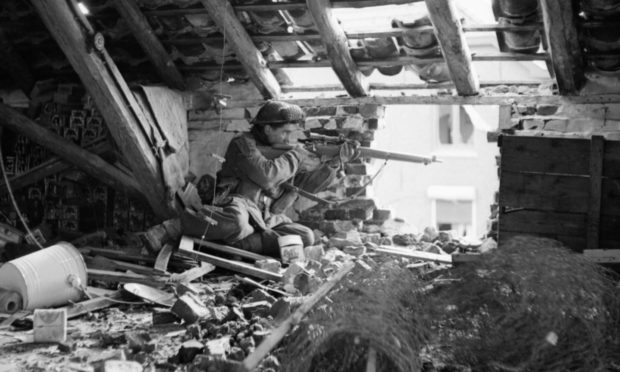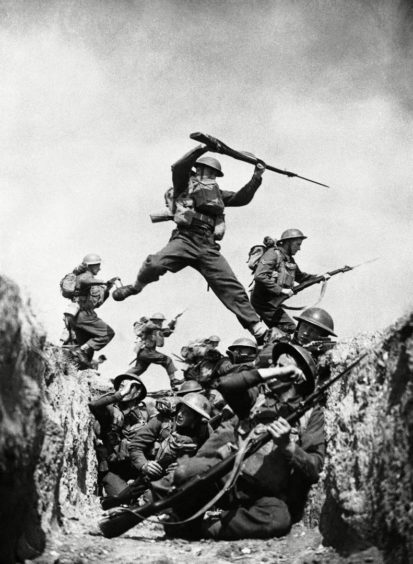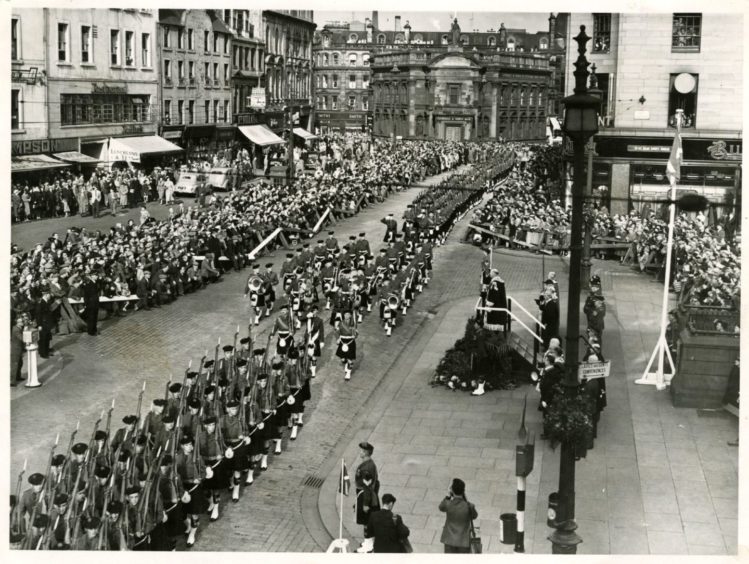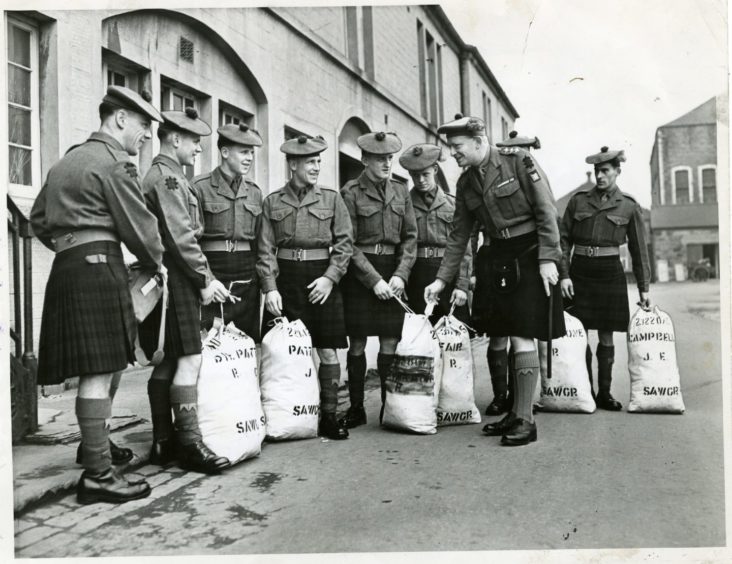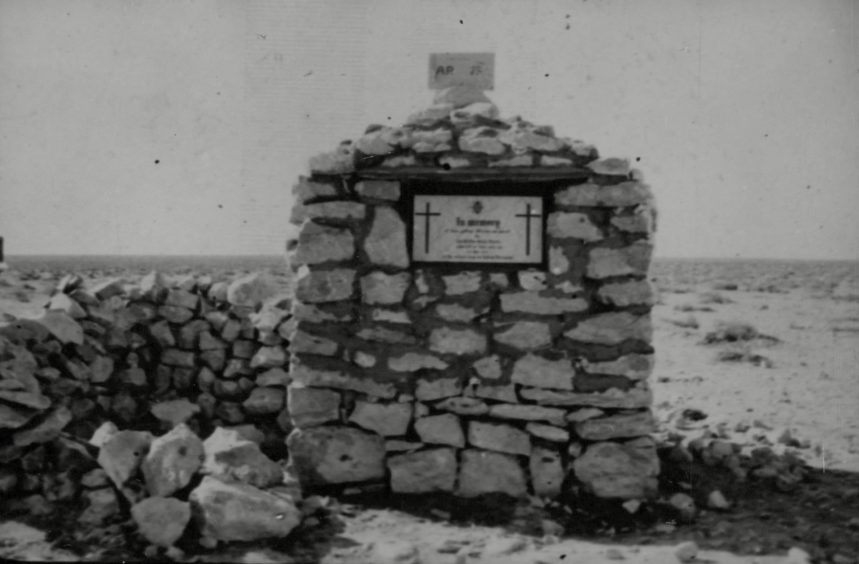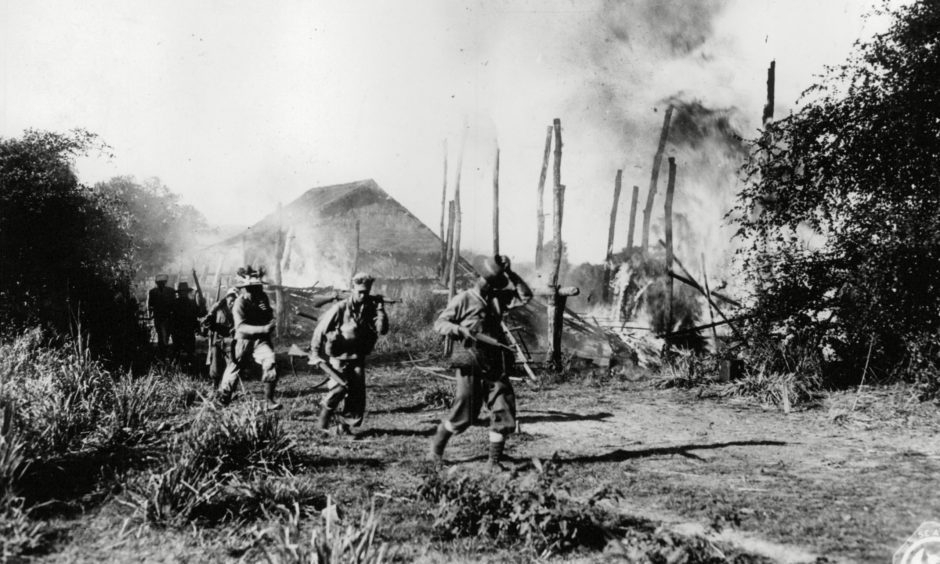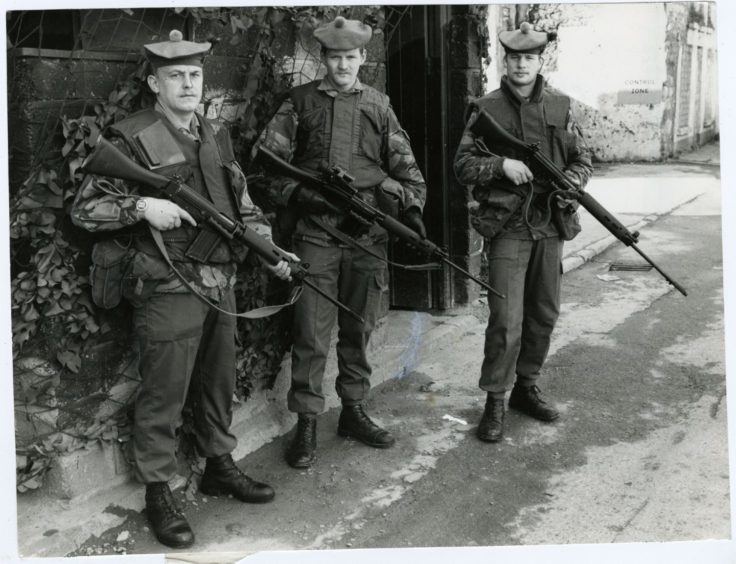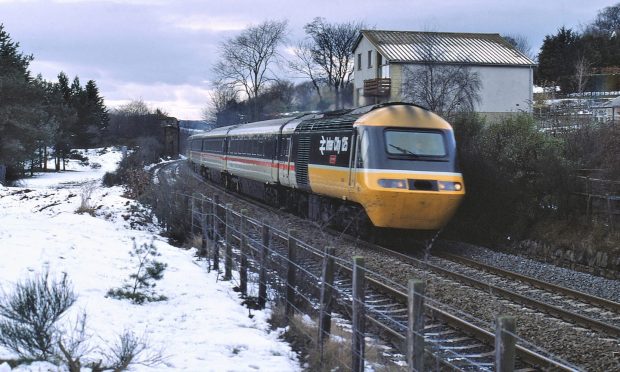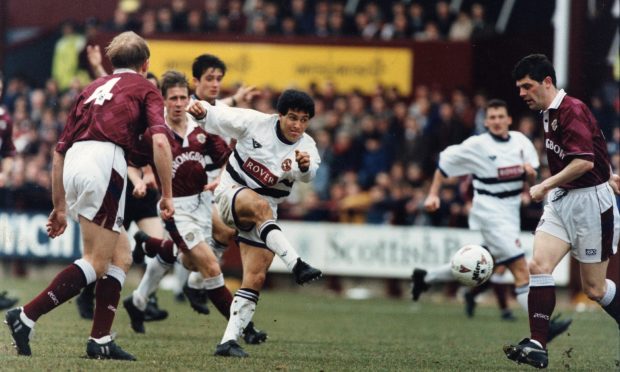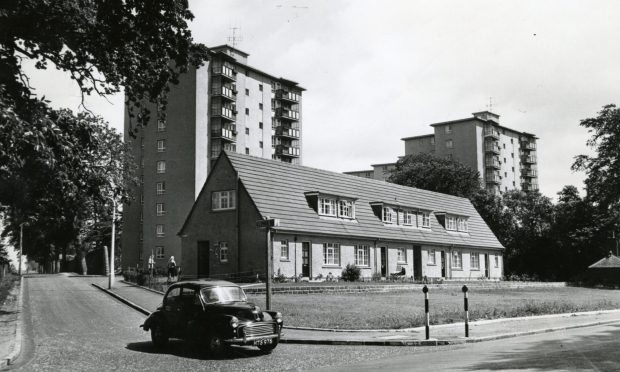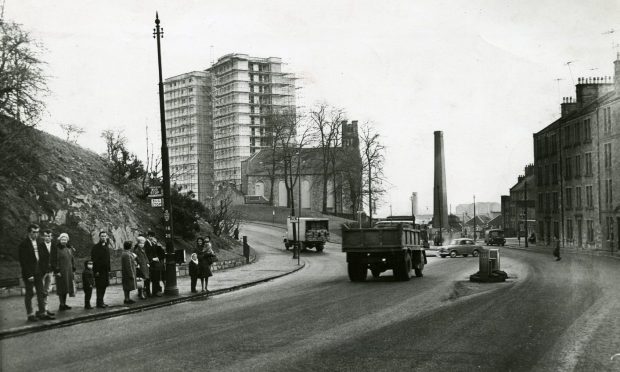For centuries the very name of The Black Watch struck fear into Britain’s enemies.
The French named them Highland Furies and they defeated Napoleon’s Invincible Legion.
Since then, in the Americas, West Indies, India, Crimea and South Africa in the 18th, 19th and early 20th centuries, during the war in Europe and, most recently, in Iraq and Afghanistan, thousands have made the final sacrifice in its colours.
Fight for survival
With its traditional recruiting grounds in Tayside and Fife, The Black Watch is the battalion with the closest links to Courier Country and it has resiliently survived some of the fiercest battles in history.
We trust it will be seen off as others have been over a unique regimental history.
The Black Watch was originally raised in 1725 to maintain law and order in the Highlands after the 1715 Jacobite uprising.
Aberfeldy
It first mustered as a regiment on the banks of the Tay at Aberfeldy in 1739 and in 1885 the spot was marked by a rugged cairn, topped by a figure of a Black Watch soldier wearing the uniform of 1740, the date when the whole regiment assembled for the first time in a field nearby.
In 1825, Stewart of Garth wrote that: “Although the commissions of the officers were dated in October, and the following months of 1739, the men were not assembled until the month of May 1740.
“The whole were then mustered, and embodied into a regiment in a field between Taybridge and Aberfeldy, in the county of Perth…”
In the early days, and for many years afterwards, recruitment to the regiment was rigidly confined to men from north of the Tay.
Partly because of this, the men of the regiment – regulars, volunteers, territorials – have retained the spirit of their Highland forebears, a clan feeling born of the young Highland men who joined up seeking a life of action and adventure.
The famous name arose because of the dark tartan worn by the Highlanders in marked contrast to the regular Redcoat soldiers, and the nature of their original role to deter further uprisings by guarding the Highlands.
From its foundation, The Black Watch won fame for itself and its country, and the respect of people all over the world.
Baptism of fire
It received its baptism of fire at Fontenoy in Flanders in 1745 for action against the French.
Although the battle was lost, a contemporary French pamphlet commented: “The Highland furies rushed in upon us with more violence than ever did the sea driven by tempest.
“In short, we gained a victory, but may I never see such another!”
When the First World War ended on Armistice Day, 1918, patrols of the regiment were crossing the same field at Fontenoy.
Overcoming a little local difficulty in the form of an early mutiny, the regiment saw service in the New World against rebel Americans and the French at the Battle of Ticonderoga in 1758, and is the only existing regiment to have fought in the American Wars of Independence.
The regiment took part in the successful action at Brooklyn, New York, against George Washington’s forces in 1776 and undertook much skirmishing against the rebels during the remainder of that war.
From 1795, the regiment has worn distinguishing red bonnet feathers “as a mark of gallantry”.
Red Hackle
The famous Red Hackle first figured prominently in the Battle of Alexandria in Egypt in 1801, when the regiment helped repel Napoleon’s forces, winning it the honour of bearing the Sphinx with the word ‘Egypt’ as a badge on its colours.
Until 1881 The Black Watch comprised two regiments of Foot, the 42nd and 73rd, both of which distinguished themselves in the final great battles of the Napoleonic Wars, Quatre Bras and Waterloo.
That year they became, respectively, the 1st and 2nd Battalions The Black Watch (Royal Highlanders).
The regimental headquarters were moved to the Queen’s Barracks, Perth, which became its recruiting and training centre.
But the drill square fell silent to the tramp of boots and the shouts of command in 1961 and was demolished to make way for the city’s inner-ring road.
The land where the barrack buildings once stood is now occupied by Police Scotland’s Perth headquarters,
The regiment’s heaviest casualties occurred during the First World War when the 53,000 servicemen who passed through its ranks suffered 8,900 dead.
In one offensive in 1918 the 6th Battalion lost over 450 men.
King George V
King George V became colonel-in-chief in 1912, succeeded on his death by his daughter-in-law Queen Elizabeth (later the Queen Mother).
In 1922 the regiment became officially known as The Black Watch (The Royal Highlanders), changed in 1937 to The Black Watch (Royal Highland Regiment).
During the Second World War, battalions of The Black Watch served in every theatre of war except Norway and the Pacific, gaining honours from Dunkirk, the Somme and Tobruk as they once again fought through France and Germany, in North Africa and finally in Burma.
At St Valery in June 1940 the remnants of the 1st Battalion were surrounded by overwhelming German forces and marched into captivity.
Three battalions fought as part of the famous 51st Highland Division at El Alamein in 1942.
As Winston Churchill declared, in the aftermath of the hostilities: “Before Alamein, we never had a victory; after Alamein, we never had a defeat.”
Burma
In March 1944, the 2nd Battalion, which was now divided into two columns of roughly 400 men each, was flown deep into Burma.
Over the next few months they attacked Japanese forces, diverting them away from the frontline.
When the two columns were finally withdrawn from the jungle in August 1944, only two officers and 48 men were judged fit for duty.
Men who later came out of the jungle would find that their stomachs had shrunk so much that all they could eat was soup.
In hand-to-hand fighting at the infamous Battle of The Hook in Korea in 1952, the regiment broke with a tradition more than 200 years old when men of the 1st Battalion drove back Chinese communists in a charge.
Immediately after action in the Korean War the battalion was deployed to Kenya in 1953 to help suppress the Mau-Mau Rebellion.
Bandit country
The 1st Battalion was deployed to Northern Ireland for two short tours in 1970, followed by a longer tour of duty in the “bandit country” of South Armagh and another tour of Belfast towards the end of 1971.
The Black Watch completed 11 tours of Ulster during the Troubles before a ceasefire brought the fighting to a close in the 1990s.
In 1996 it returned to the Highlands for the first time in 66 years when it moved to Fort George near Inverness.
Since then The Black Watch has given brave service in Iraq and most recently in Afghanistan.
The Black Watch was amalgamated into The Royal Regiment of Scotland in 2006.
The move was particularly controversial as The Black Watch was stationed in Basra in Iraq when the merger was announced.
One of its greatest honours came in peacetime, however.
Freedom
In 1947 the Freedom of Perth was conferred on the regiment and received on its behalf by its colonel-in-chief, the Queen Mother, whose brother had fallen in the Battle of Loos in 1915 while serving in the 8th Battalion.
Thereafter it subsequently won the right to march “with bayonets fixed, drums beating and colours flying” at similar ceremonies in Dundee (1954), and elsewhere, including its spiritual home Aberfeldy (1970) and Fife (2006).
The Queen Mother received the Freedom of Dundee on behalf of The Black Watch and she described it as “the great regiment which has so warm a place in the hearts of all of us”.
